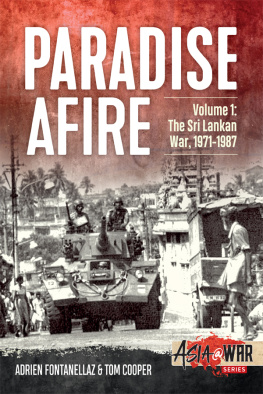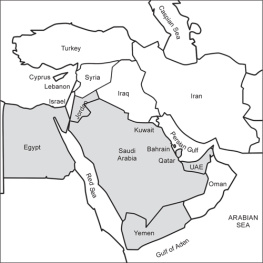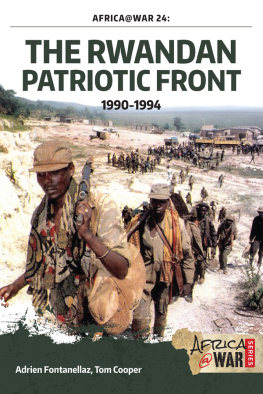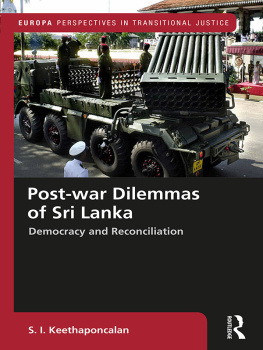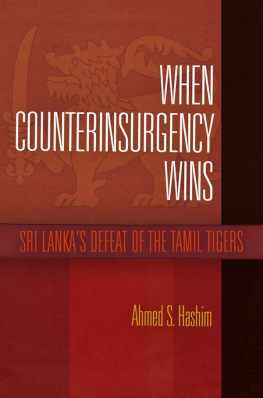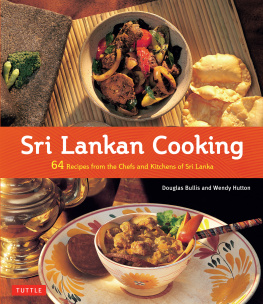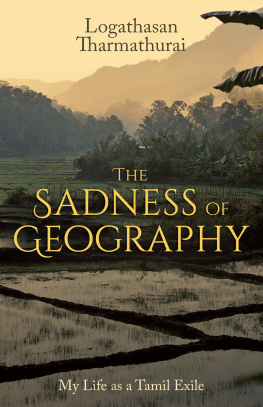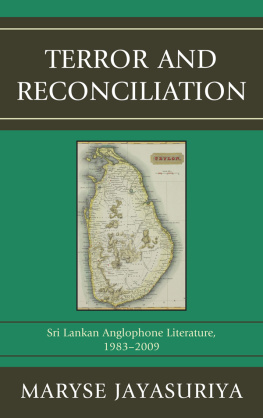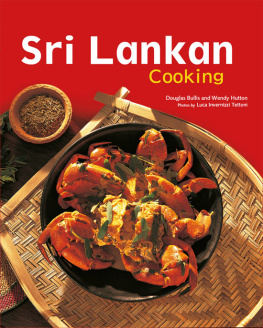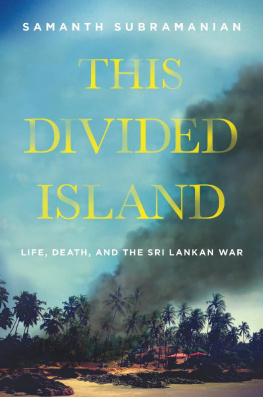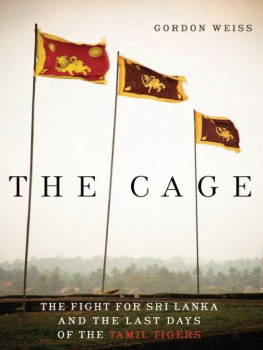Pagebreaks of the print version

Paradise Afire. Volume 1
Published in 2018 by:
Helion & Company Limited
26 Willow Road
Solihull
West Midlands
B91 1UE
England
Tel. 0121 705 3393
Fax 0121 711 4075
email:
website: www.helion.co.uk
Twitter: @helionbooks
Visit our blog http://blog.helion.co.uk/
Text Adrien Fontanellaz and Tom Cooper 2018
Photographs as individually credited
Colour profiles Tom Cooper and David Bocquelet 2018
Maps drawn by and Tom Cooper 2018
ISBN 978-1-912390-34-2
eISBN 978-1-913118-44-0
Mobi ISBN 978-1-913118-44-0
British Library Cataloguing-in-Publication Data
A catalogue record for this book is available from the British Library
All rights reserved. No part of this publication may be reproduced, stored, manipulated in any retrieval system, or transmitted in any mechanical, electronic form or by any other means, without the prior written authority of the publishers, except for short extracts in media reviews. Any person who engages in any unauthorized activity in relation to this publication shall be liable to criminal prosecution and claims for civil and criminal damages.
Cover:
Note : In order to simplify the use of this book, all names, locations and geographic designations are as provided in The Times World Atlas , or other traditionally accepted major sources of reference, as of the time of the events described. For reasons of simplicity, genuine designations for Soviet/Russian-made weapons used in this book are mentioned once, and then their ASCC (or NATO) codes are used instead.
ABBREVIATIONS
| AB | Air Base |
| AK | Russian for Automat Kalashnikova; general designation for a class of Soviet, or former East Block, manufactured 7.62mm assault rifles |
| APC | Armoured Personal Carrier |
| CAS | Close Air Support |
| COIN | Counterinsurgency |
| EROS | Eelam Revolutionary Organisation |
| IAP | International Airport |
| KIA | Killed in Action |
| Km | Kilometre |
| LTTE | Liberation Tigers of Tamil Eelam |
| MANPAD(S) | Man-portable air defence system(s) light surfaceto- air missile system that can be carried and deployed in combat by a single soldier |
| MiG | Mikoyan I Gurevich (the design bureau led by Artyom Ivanovich Mikoyan and Mikhail Iosifovich Gurevich, also known as OKB-155 or MMZ Zenit) |
| PLOTE | Peoples Liberation Organization of Tamil Eelam |
| POW | Prisoner of War |
| Sqn | Squadron |
| SLA | Sri Lanka Army |
| SLAF | Sri Lanka Air Force |
| SLN | Sri Lanka Navy |
| STF | Special Task Force, the Sri Lanka Police dedicated counterinsurgency unit |
| TELO | Tamil Eelam Liberation Organisation |
| WIA | Wounded In Action |
INTRODUCTION
This is the first volume in a mini-series covering the history of several inter-related military conflicts on Sir Lanka, which raged from 1971 until 2009. The wars in question not only shattered the fundamentals of the entire local society, but gradually developed into a massive conventional conflict that included the deployment of division-sized ground forces, and air and naval warfare of an intensity comparable with that of the Indo-Pakistani War of 1971.
As usual in the case of works of this kind, our research is based on a wide range of sources, including numerous scientific studies, official publications, as well as first-hand testimonies. As so often in the case of a relatively recent conflict, some of the perceptions in question are fiercely disputed. From the standpoint of both authors, this is little surprise: through our research and travels, the authors are uncomfortably familiar with many bloody wars fought in the so-called Third World over the last 50 years, and the war on Sri Lanka is no exception from this rule. We consider any source to be relevant until it can be proven as without merit beyond any doubt. It is a matter of fact that governments, national and private organisations, private companies and certain individuals face harsh ramifications when their influence and/or participation in such conflicts become public.
The authors therefore carefully collected all the available information, cross-examined various sources, corrected and updated their findings with the aim of offering the most detailed and dependable insight possible, with the objective of providing a comprehensive set of answers to questions like who, when, where, how and why.
While the emphasis of the coverage provided in these volumes is on military history, warfare never happens in a vacuum, but as a part of a wider context. Therefore, descriptions of geo-political circumstances are added as necessary. Although these are kept to an absolute minimum and used solely to explain the backgrounds for specific developments, the reader should be forewarned that this account is no attempt to provide a full spectrum history of the Sri Lankan civil wars. Indeed, we have gone to great lengths in order to depoliticise the narrative. This meant avoiding the use of terms such as regime, rebels, terror or terrorist. Clearly, one mans freedom fighter is anothers terrorist. This book does not aim to judge the politics. Having no political axe to grind, the authors instead concentrated on recording and describing the military history of Sri Lanka, and have thus made all efforts to maintain a non-partisan narrative that remains readable and easy to understand.
CHAPTER 1
THE ROOTS OF THE CONFLICT
The Island of Sri Lanka has been inhabited for at least 75,000 years. Its inhabitants were using iron tools, and cultivated fields from the 9th Century BC. About 400 years later, different tribes speaking Indo-Aryan languages began to settle on the island, mixed with domestic population and began coalescing into a single political entity the Anuradhapura Kingdom, named after the city of the same name (founded in the 3rd Century BC). The Kingdoms population became known as the Sinhalese, after the name of one the tribes. Buddhism spread swiftly while the Anuradhapura kingdom grew ever more powerful and extended its control over virtually the entire island. During the subsequent centuries, dense trade links with South and South-Eastern Asia were developed, very large monasteries were built, and a gigantic and highly complex network of irrigation channels and cisterns came into being to sustain the Kingdoms increasing population. In the meantime, while Buddhism gradually lost influence in India and was superseded by a Hindu resurgence, Anuradhapura remained an essentially Buddhist kingdom, and this became one of its characteristics for the next few centuries, contrary to other parts of South-East Asia where the Hindu religion continued to spread.

A Portuguese illustration, showing Sinhalese women and children, at the time Westerners first reached the island they named Ceylon during the first half of the 16th Century. (Wikimedia Commons)
The spread of Buddhism on Sri Lanka shows that the island kingdom was never an isolated entity. On the contrary, it was very much a part of the Indian subcontinent, whose evolutions, since the early ages, often had important repercussions of a cultural, religious, economic, but also political and military nature. Indeed, the Kingdom of Anuradhapura found itself at war with such powerful south-Indian Hindu Dravidian states such as the Pandyan, Pallava, or Cholas. By the 10th Century, Anudharapara had been weakened by internal rivalries and fell to a Cholan invasion. Although the Cholans were forced out by King Vijayabahu, in 1070, the capital of the kingdom was abandoned in favour of Polonnaruwa, which proved easier to defend.

